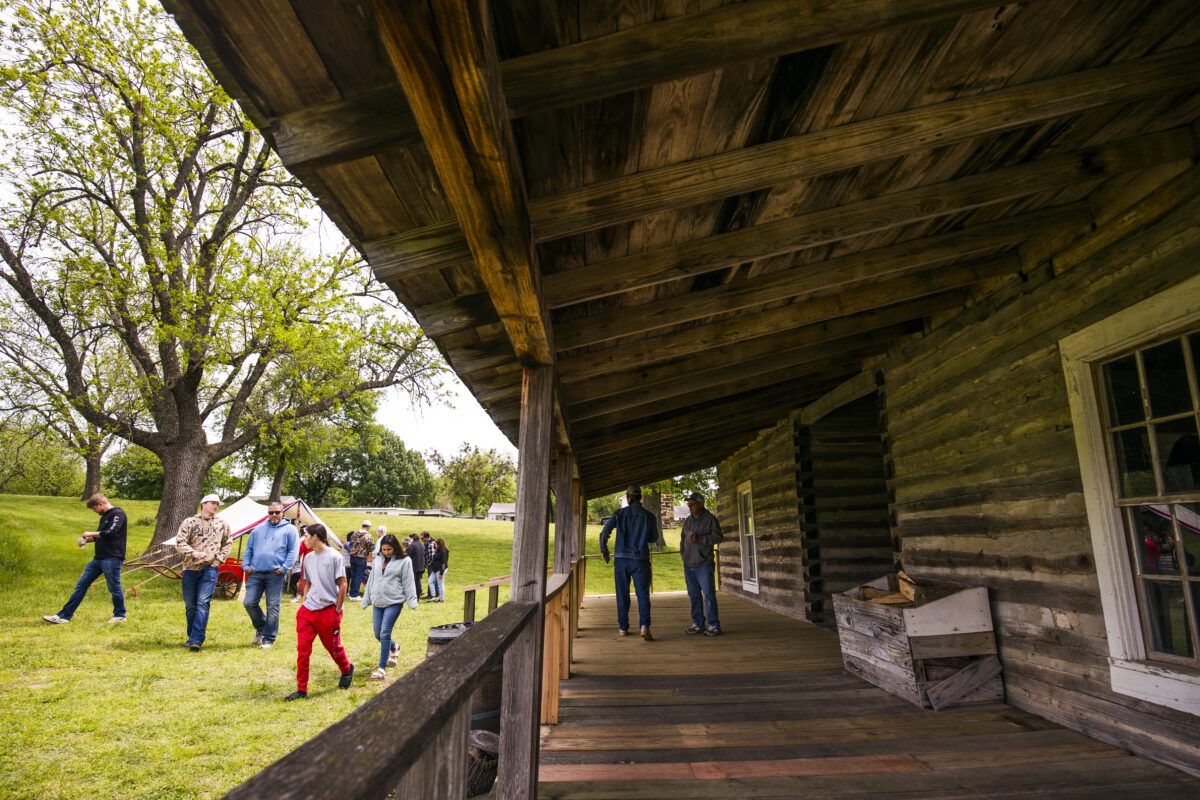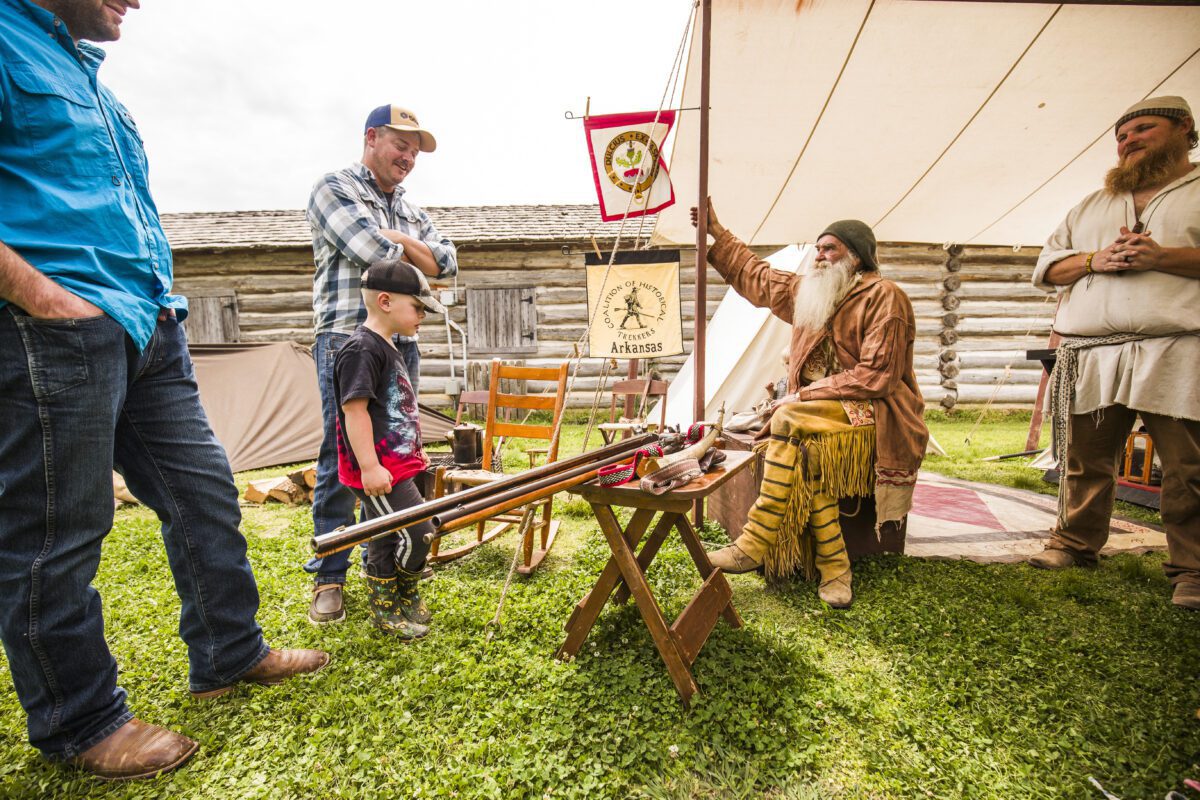The Fort Gibson historic site in northeastern Oklahoma sits at the crossroads of three rivers, and offers the opportunity to be transported to Oklahoma’s past – a past that includes a wide variety of stories. This spring marked 200 years since the establishment of the fort and a chance to examine the lessons learned from a varied, but not always positive, history.

“The fort and its establishment are sort of the doorway to the West, and as such, is able to show a hugely diverse hub of people, cultures and social, political, physical geographies,” says Jennifer Frazee, site director at Fort Gibson.
The fort, in its original form, was part of a regiment moved from Fort Smith, Ark. in 1824. It was named after U.S. Army Commissary General George Gibson and was the first military settlement in what would become Indian territory.
“Located farther west than any other existing U.S. post, [Fort Gibson] was built to protect the nation’s southwestern border and to maintain peace on the frontier,” according to Brad Agnew in The Encyclopedia of Oklahoma History and Culture.
The ‘peace’ referred to working with the Native tribes in the area, as well as managing relations as more tribes were forcibly removed to Indian territory. During this Native removal period, the fort was occupied and played an important role as a launching place for expeditions further westward. This continued until the 1850s when the fort was briefly decommissioned and given to the Cherokee Nation.

Just a few years later, Fort Gibson was reactivated due to the invasion of Indian Territory during the Civil War. The fort would continue to play a role during this time in securing the area for the Union army.
“Troops from Fort Gibson marched south in July 1863 to win the engagement at Honey Springs, the war’s largest and most important engagement in Indian Territory,” writes Agnew. After the Civil War, the fort remained active for a time, but was largely abandoned by 1890. It did play a role near the turn of the 20th century by housing the Dawes Commission and their work with Cherokee Freedmen.
While the original fort barracks are gone, a replica palisade was built by the Works Progress Administration in the 1930s, where visitors can see living history demonstrations, including showcases of period attire. This historic site also includes a visitors center in the original commissary; the bakery, where period baking demonstrations are held; and a historic hospital currently in a full rehabilitation effort.

The 200th Anniversary
For this bicentennial year at Fort Gibson, planned activities have taken the opportunity to commemorate the occasion, but also recognize the difficult history. In April, the Oklahoma Historical Society marked the anniversary with an education day for students, and another day open to the public, which included speakers and presentations from members of Native tribes impacted by removal policies in the 19th century.
There are many more entertaining and educational events coming up for the historic site in this special year. Visit okhistory.org/sites/fortgibson to keep up with the calendar.























